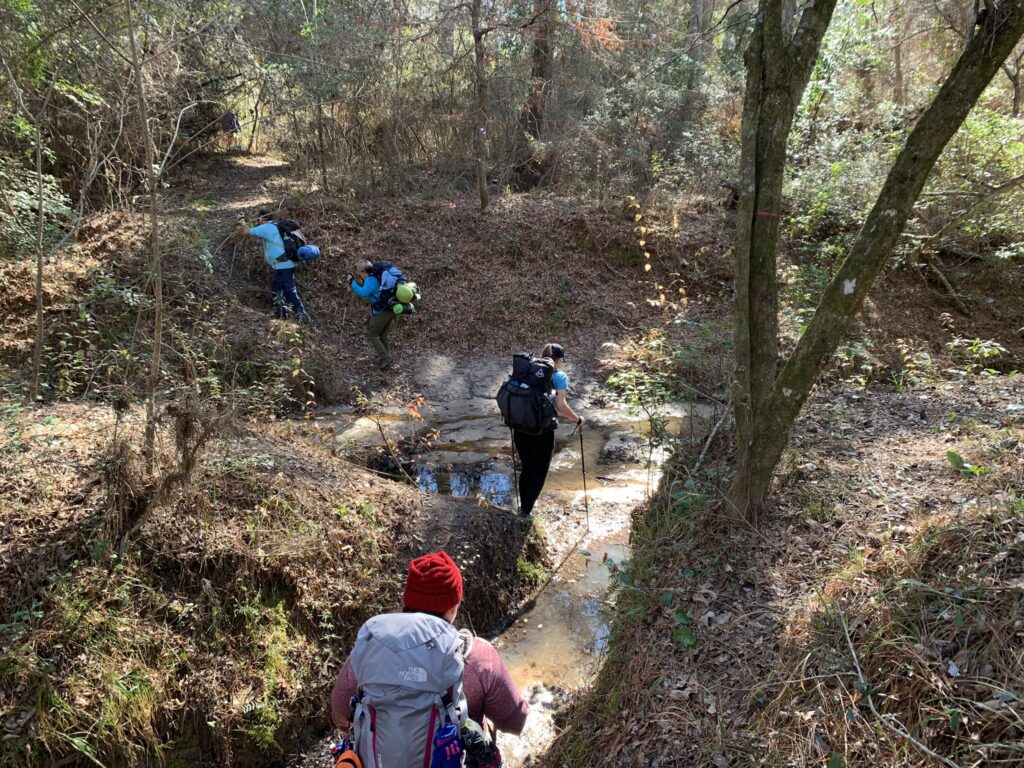
Have you ever stumbled on a root during a hike, caught yourself just in time, and kept moving like nothing happened? That moment of graceful recovery? You can thank proprioception — your body’s hidden superpower.
Proprioception is your body’s ability to sense its position, movement, and balance in space without needing to look. It’s your internal GPS, letting you know where your limbs are and how to move them — even in the dark, on rocky terrain, or when fatigue sets in.
For hikers, especially women navigating summit paths, proprioception plays a crucial role not just in performance, but in safety and long-term joint health.
Why Proprioception Matters for Hiking & Longevity
- Improves Balance & Coordination: When trekking across uneven ground, jumping across streams, or navigating steep descents, proprioception keeps your movements efficient and reduces the risk of tripping or rolling an ankle.
- Reduces Risk of Injury: With good proprioception, you react faster to sudden shifts in terrain. This responsiveness protects joints, especially knees and ankles — two areas that can suffer on long summit hikes.
- Boosts Longevity: As we age, proprioceptive decline can lead to falls and injuries. Keeping it sharp supports healthy aging, allowing for continued independence and active travel well into later decades.
Women vs. Men: Is There a Difference?
Yes — and it matters on the trail.
Women often have a wider pelvis and different Q-angle (the angle at which the femur meets the tibia), which can influence knee tracking and balance. Hormonal fluctuations also affect joint stability, making proprioceptive training even more vital for women. Men tend to have more muscle mass and may naturally rely more on strength than balance. While this doesn’t make men immune to injury, it often means women need to focus more on joint stability and neuromuscular control to stay strong and safe on the trail.
3 Real-World Hiking Moments Where Proprioception Saves the Day
- Navigating Steep Descents: As you hike downhill, your feet may land at odd angles. Proprioception helps your knees and ankles adjust mid-step to avoid twisting or slipping.
- Climbing Over Rocks or Logs: When your eyes are focused ahead, proprioception helps your legs find their footing and balance without needing to stare at every step.
- Crossing a Stream on Unstable Rocks: Feeling your foot wobble and instantly adjusting your core and hip muscles to keep you upright? That’s proprioception doing its job.
7 Exercises to Improve Proprioception for Hikers
You don’t need fancy equipment. Most of these can be done at home or on a trail!
- Single-Leg Balance
Stand on one leg for 30 seconds, then switch. Close your eyes to make it harder! - Heel-to-Toe Walk (Tightrope Walk)
Walk forward placing the heel of one foot directly in front of the toes of the other. Great for balance and coordination. - Balance Pad Squats
Stand on a soft surface (like a balance pad or pillow) and perform squats slowly. This trains the stabilizing muscles in your knees and ankles. - Toe Taps on a Step or Rock
Tap your toes alternately on a step, bench, or low rock. Focus on quick, controlled movement. - Clock Reach
Stand on one leg and reach the other foot forward (12 o’clock), to the side (3 or 9 o’clock), and back (6 o’clock). Repeat on both sides. - Resistance Band Lateral Walks
Strengthen your hips and glutes, key muscles for lateral stability on uneven terrain. - Eyes-Closed Marching in Place
Gently march in place with your eyes closed. Feel how your body adjusts without visual input.
Why It’s Especially Helpful for Women Hiking Up (and Down) a Summit
Summit hikes challenge every part of your body. Uphill climbs require strength and coordination. Downhill descents are notorious for knee strain and slipping risks. Proprioceptive training prepares your body for both:
- Upward: Helps your muscles fire in coordination, so you place each step with intention and strength.
- Downward: Enhances control and reaction time, reducing impact on joints and preventing tumbles.
For women, this means protecting the knees (a common weak point), improving balance, and building confidence in every step. It’s not just about reaching the summit — it’s about doing it safely, repeatedly, and well into your 60s, 70s, and beyond.
Final Thought
Proprioception isn’t something we talk about enough, but it’s one of the most important systems to train if you want to stay active and injury-free as you age. Whether you’re hiking your first hill or prepping for a mountain summit, building proprioception is like sharpening your instincts.
So next time you’re out on the trail, thank your body for its quiet genius. And if it needs a little help? Give it the training it deserves.
From the sidewalk to the summit — your journey begins with balance.



